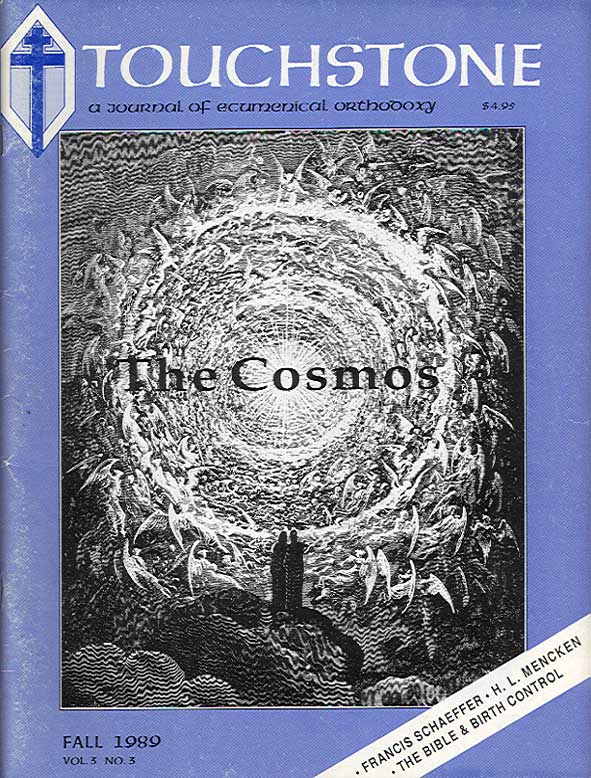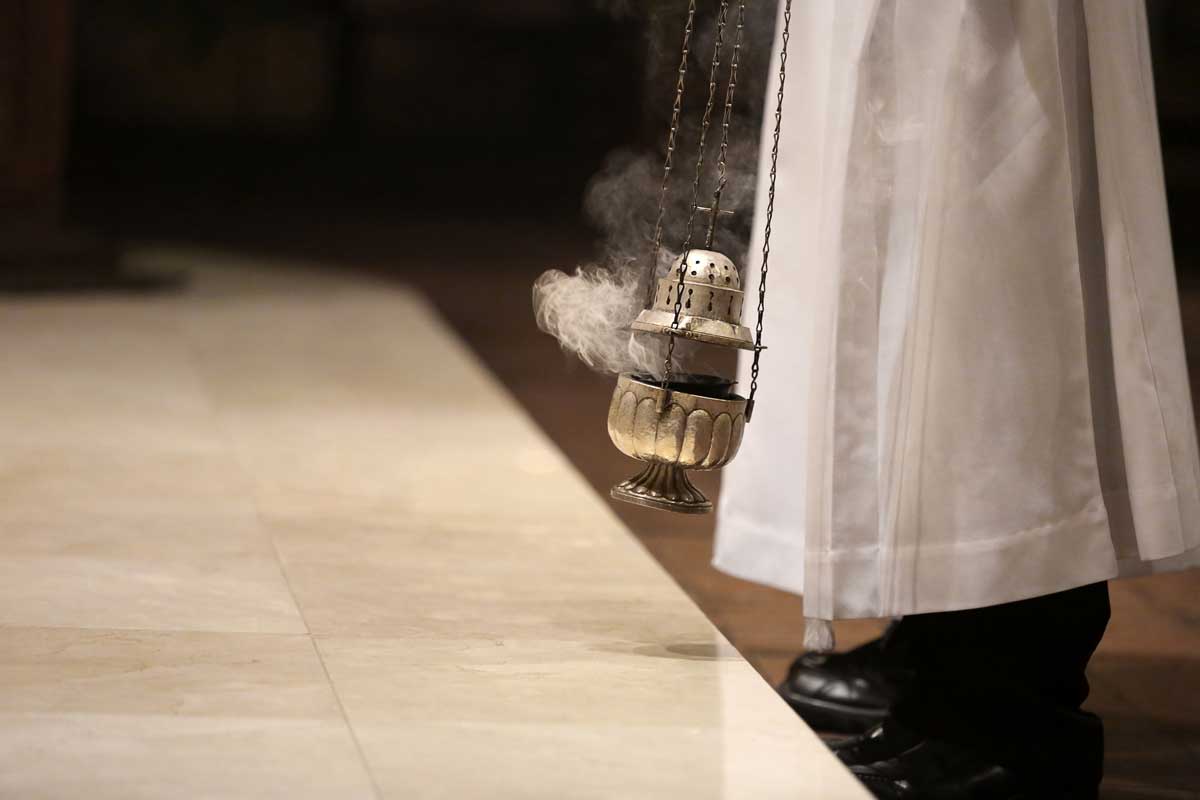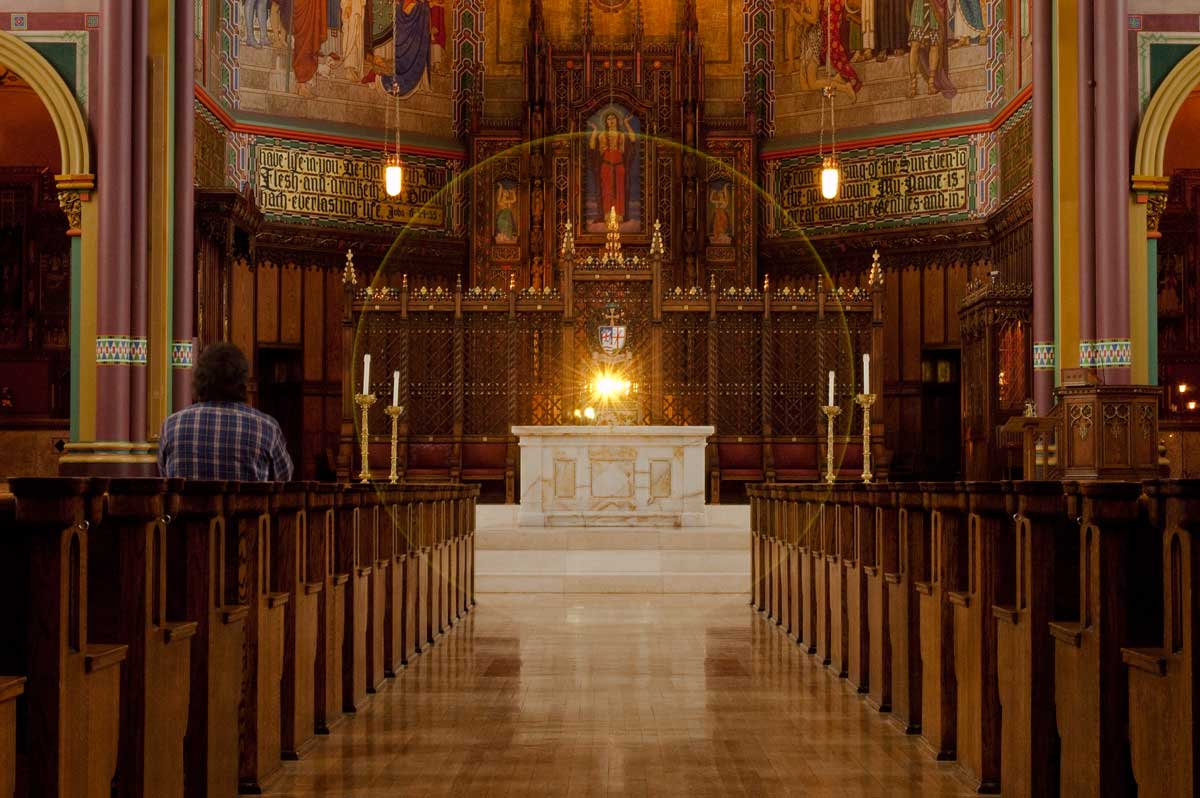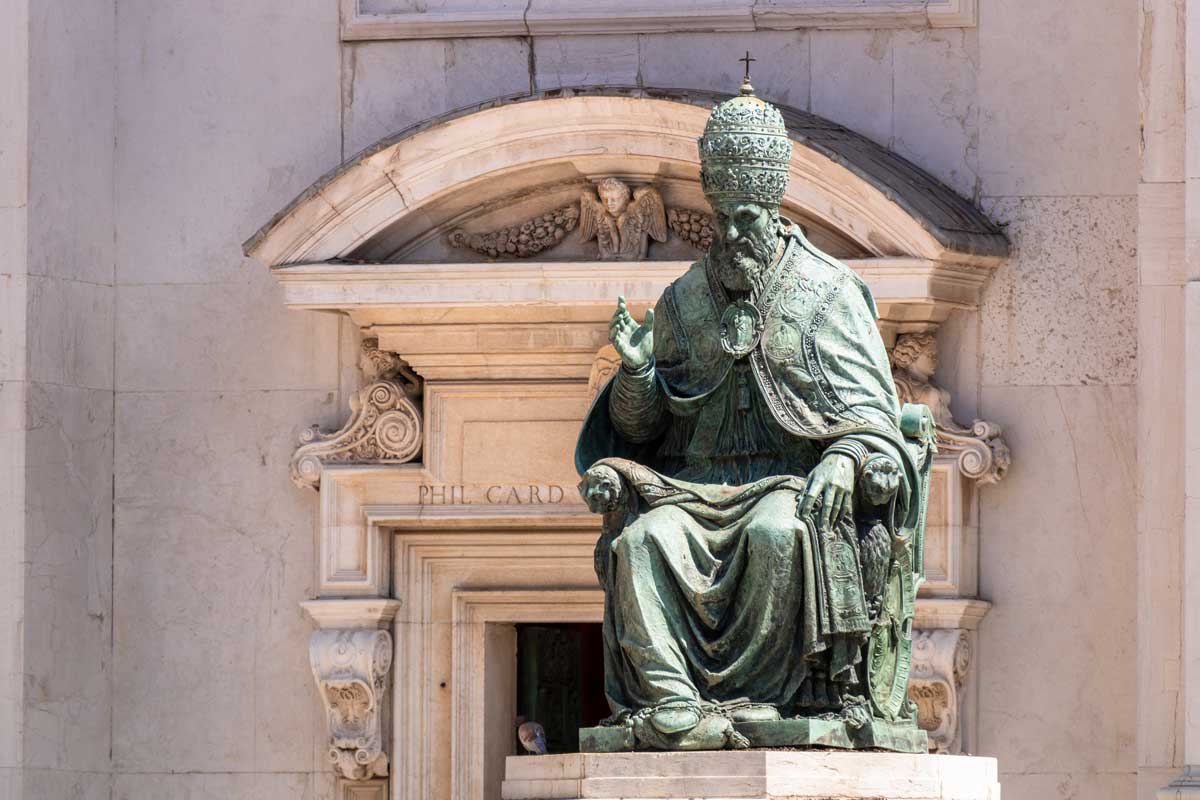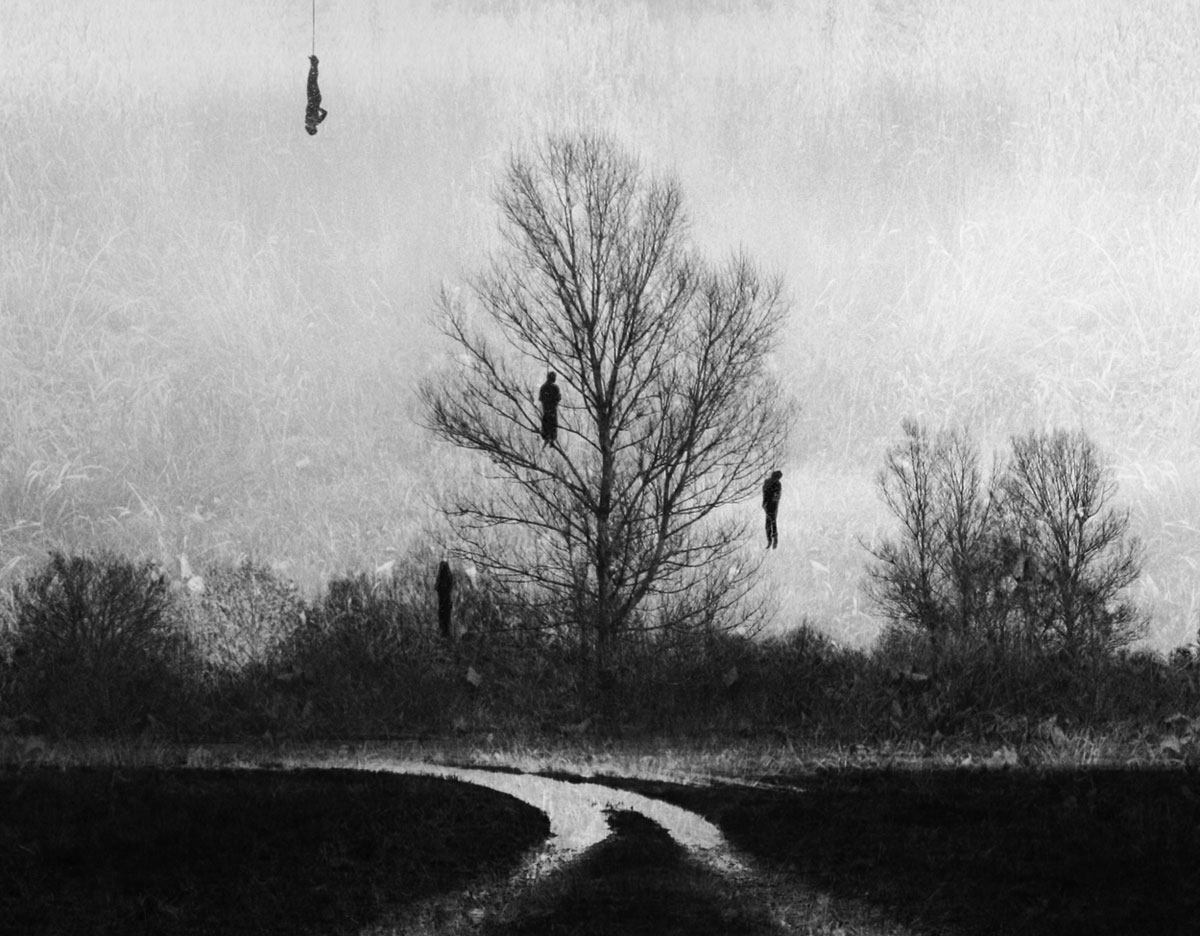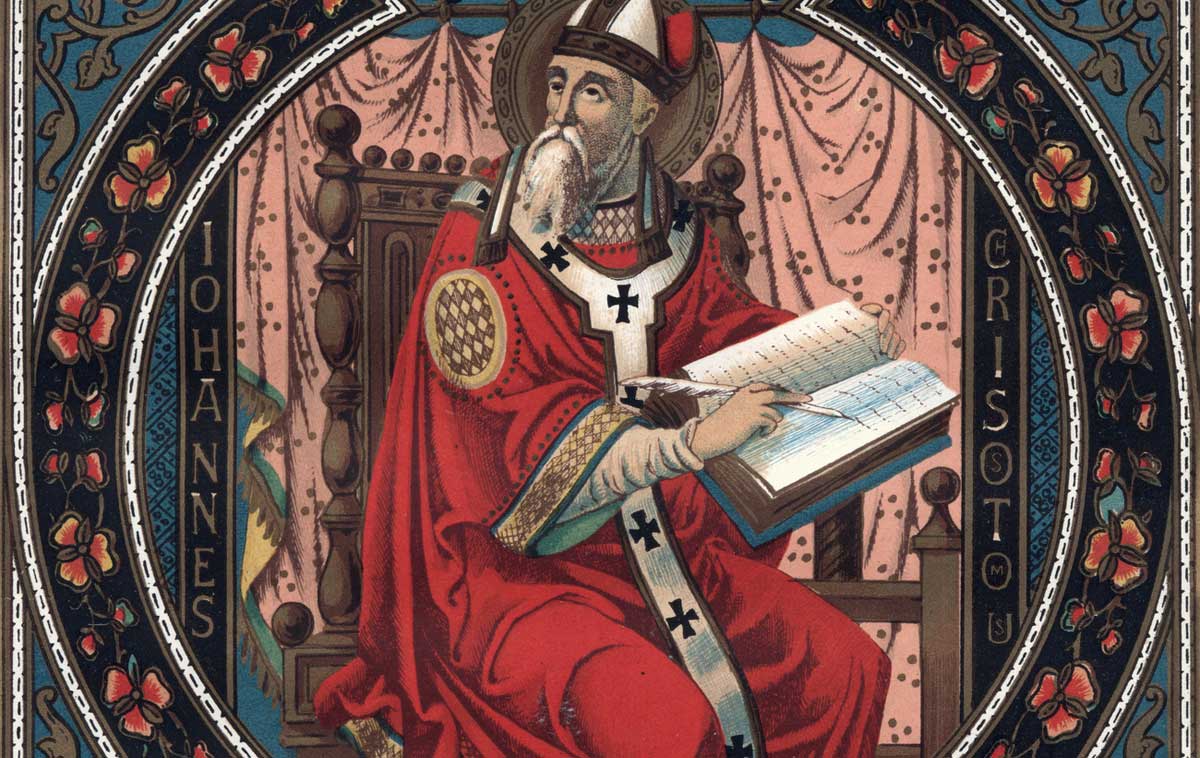Feature
Shusaku Endo and Scandal
Catholic Literature from Japan
The name Shusaku Endo will doubtless be new to many Christians outside of the Asian Pacific Rim. The fact that Japan has produced a best-selling novelist whose religious orientation has its roots ostensibly in Roman Catholicism may even be a cause for surprise—especially given the traditional Japanese antipathy for Christianity in its various forms. Indeed, it is ironic that a religion perceived by many Japanese as an exclusively “Western” commodity would find its way into the literary life of an author the stature of Shusaku Endo.
For the newcomer to this often enigmatic author, a bit of biography is in order. Endo was born in Tokyo in 1923 to parents who divorced while he was very young. Afterwards, Endo’s mother moved with her son to Kobe and became an ardent Catholic. At the age of eleven, Shusaku received baptism at the insistence of his mother and aunt. Several years later as a young adult in postwar Japan, he graduated in French literature from one of Japan’s leading private universities and then spent three years studying modern French Catholic literature at the University of Lyon, France. While there, the thirty-year-old Endo discovered his vocation as a novelist as well as the theme which would dominate many of his serious works: the inability of Christianity to take root, grow and flourish in Japan. Now sixty-five and with an extensive catalogue of writings bearing his name, Shusaku Endo is arguably the leading writer in Japan today. His international reputation is evidenced by the fact that his works have been translated into more than twenty languages (ten of his books are available in English), and his writing is often compared with that of Graham Greene and François Mauriac.
Endo’s inclusion in the ranks of such established artists as Greene and Mauriac suggests that Christian readers as yet unfamiliar with his work are missing out on a good read; the translation of Endo’s latest book may provide the necessary introduction to his thought and art. Although something of a surprise to his following and perhaps not representative of his work as a whole, Endo’s most recent novel, Scandal (New York: Dodd, Mead & Company, 1988) finds the author exploring many of the themes he has treated in other works. A controversial work, Scandal tells the story of Suguro, a sixty-five-year-old Japanese Catholic author whose otherwise predictable lifestyle is suddenly challenged by several people claiming to have spotted him in Kabuki-cho, the adult amusement sector of Tokyo’s garish Shinjuku district. At first, Suguro assumes such sightings are spurious, that his accusers have simply mistaken him for someone else. After seeing a man who could pass for his double, however, Suguro becomes convinced that an imposter is intent on soiling his Christian reputation and destroying his carefully constructed literary career. His keen writer’s eye detects a yellow journalist observing his every movement in pursuit of incriminating evidence, and Suguro determines that he will expose what he believes is nothing more than a tasteless hoax, so that he and his wife can once again live in peace.
Suguro’s detective work to locate and unmask his double ultimately leads him into the blemished underbelly of Tokyo’s adult bookshops, peep shows and rabu hoteru (“love hotels”). In the course of his investigation, he is shocked to meet a growing number of people who claim to know him as a frequent customer—including Madame Naruse: by day, a kindhearted hospital volunteer and by night, a seasoned participant in red-light district debauchery. Although his sightings of the elusive “double” continue, Suguro begins to question his own identity and sense of moral character. He cannot account for certain periods of time; is it his advancing age, or has he been temporarily assuming a second personality? He dreams of an intimate encounter with a young girl; is it his imagination, or did it actually happen? The final chapters of Scandal present readers with a portrait of humanness which is on the one hand mysteriously perverse and paradoxical, while at the same time destined to yearn for redemption from sin.
Several themes emerge from a first reading of Scandal, which may also be traced throughout Endo’s other writings. One idea which surfaces continually is that of the relationship between ugliness, depravity and sin on the one hand and beauty, joy and salvation on the other. A group of artists in Scandal holds an exhibition based on an aesthetics of deformity; Suguro attends and finds a portrait of himself with a vulgar, sneering smile on his lips. The painter claims Suguro was the model, and that he has “taught” the artists to look for joy in depravity and “to portray the beauty that lies in objects that everyone else considers foul and hideous” (p. 70).
On a TV talk show, Suguro later finds himself pontificating about finding the kernel of redemption in the mystery of iniquity. He tells the program’s host that “the sins that men commit are a manifestation of their yearning for rebirth,” and that “the potential for salvation is contained within the sin” (p. 100). Toward the end of Scandal Suguro faces the crisis of human depravity, and it is disclosed that during his entire career as a writer, he
had always felt that a token of salvation could be discerned within every base act of man. He had believed that a rejuvenating energy beat faintly within every sin. It was for this reason that he had been able to believe, however shakily, that he was a Christian. But after today he had to accept this filthiness as a part of himself. He had to begin searching for evidence of salvation even within this filthiness. (p. 241f.)
A few pages later Suguro writes a letter in memory of a writer friend who has recently died of old age:
. . . they say that the older we get, the more sensitive our minds grow to the shadows of the looming world. Does this mean that the filthy landscape that stretches before my eyes is part of my preparation, my rite of passage, into the life to come? What’s the lesson that this realm of filth is trying to teach me? I don’t have the faintest idea. My only feeble hope is that the light will embrace even that murky realm. (p. 249)
Potential readers of Scandal my well wonder what such a story has to do with the spiritual life. It must be stated at this point that there is nothing prurient about Endo’s writing, here or elsewhere. In fact, considering its subject matter, Scandal is—surprisingly—not the least bit titillating. (Indeed, even a sanctified sense of eros is absent from the novel.) Perhaps wary of alienating a larger audience, Endo has deftly avoided what might be viewed by a conservative readership as cheap and sensational. His concern in Scandal is something larger than what the story line suggests, and his subtle treatment of such will likely more fully arouse the appreciation of readers somewhat familiar with biblical teaching.
• • •
Although no overt attempt is made in Scandal to explicate Suguro’s personal musings on sin beyond the passages cited above, the paradox of finding redemption and beauty in objects the majority deems unattractive is, on a very basic level, thoroughly biblical and in keeping with the faith Suguro professes. The Book of Isaiah tells of one whose appearance was “disfigured beyond that of any man,” and in whom there was “no beauty or majesty. . . nothing in his appearance that we should desire him” (chapters 52 & 53). Yet this same person is said to have brought peace and healing to Israel. The New Testament as well reaffirms the idea of real beauty behind the seemingly unattractive: James, for example, wrote that the believer wearing poor clothing was rich in the kingdom of God (chapter 2). The very notion of grace which so fills the pages of Scripture presupposes that there is something of value—something worth dying for—behind the ugliness of human sin. In Scandal, however, Suguro’s finding redemption from sin in the act of sin itself challenges his credibility as a “Christian” character, and it is just here that the central weakness of Scandal unfolds.
Endo gives readers a Christian main character not unlike himself—especially considering the relative paucity of well-known Catholic writers in Japan today. There is very little in the character of Suguro, however, to identify him overtly as a Christian. Readers are simply told near the beginning of the book that he was born into a nominally Catholic family, received baptism at an early age because of his mother’s influence, and went on to become “Japan’s Christian writer.” Absent from the novel’s exposition of Suguro’s character is any intimation that he does things which would typify a Christian of his stature (at least to Christian readers in the Western world, the audience to whom this English translation is apparently directed). In fact, the opposite seems to be the case: Suguro scoffs when he sees a woman praying (p. 169), expresses anger when a man claims to have been converted to Christianity through reading his novels (p. 79 & 112), and has no taste for communal worship. A couple of times toward the end of the book he has vague thoughts of Jesus and the Bible, but such events are rare and seem intrusive to the character as it has been established earlier on.
This weak characterization is underscored by several scenes which depict Suguro as a morally insensitive man. Besides being calculatingly dishonest (particularly with regard to his saintly wife), he has no reaction to viewing a sadomasochistic orgy (p. 109), and it is implied that he formerly enjoyed watching “the sexual grapplings of others” (p. 108). His faith seems to be based on some vague sense of “rejuvenating energy” in sin, mixed together with the Buddhist concept of rebirth through suffering (p. 96ff.). He also believes that Friday the 13th is “unlucky” because it is the date on which Christ died (p. 209) and that in the afterlife Christians and non-Christians will share the same eternal resting place (p. 218). Readers are expected to believe that Suguro is a Christian leader of Japan, but all we seem to be offered is the shell of a Christian with nothing particularly distinctive in substance about his life or beliefs. We are driven to wonder what being a Christian entails to Suguro, and to speculate about the influence of culture on ethics in Japanese Christianity. Such questions have been the impetus behind many reviewers’ examinations of Endo’s own religious background in search of insight into his stories. For the same reason, it is not inappropriate for inquisitive first-time readers of Endo to question the author’s understanding of the Christian faith. His religion has often been an easy target for criticism of his writing, and readers familiar with his more overtly “Christian” works have long since disparaged finding conventional theology from the pen of Japan’s leading Catholic novelist.
Two other major works by Endo may serve as illustrations of some of the difficulties the writer has encountered in attracting a larger following of orthodox, evangelical readers. His 1966 historical novel Chinmoku (translated by William Johnston in 1979 as Silence) tells the story of martyrdom during the aftermath of Japanese Catholicism’s darkest hour: the Shimabara rebellion of 17th century Nagasaki. During this period, those who practiced their faith publicly (or merely called attention to themselves by refusing to officially denounce Christ) were systematically tortured and murdered by the Japanese authorities of the Tokugawa dynasty. Endo’s sympathetic treatment of those who chose to apostatize rather than endure pain and death earned him notoriety among Christians in Japan; many interpreted his book as a deprecation of the memory of Japan’s honorable martyrs. It is not difficult even for non-Japanese to identify with their consternation: Silence presents readers with a fictional Jesus who mystically appears to the persecuted faithful and—rather than encourage them to endure to the end—persuades them to denounce Him. Japanese Christians today with a high regard for the authority of Scripture are likewise disturbed to discover the Jesus of Silence denying that He had ever told Judas, “What thou doest, do quickly” (John 13:27).
Similar curiosities dot the pages of Endo’s 1973 Iesu no Shogai (A Life of Jesus, 1978 English translation by Richard Schuchert). Originally published as a series of magazine articles to introduce the person of Christ to an audience of Japanese non-Christians, the book emphasizes “the kind-hearted maternal aspect of God revealed to us in the personality of Jesus” (from the author’s preface). It is Endo’s implicit contention throughout the book that in order for Japanese people to be attracted to Jesus, He must not be presented as an authoritarian judge, and neither as “the One who fulfills the Jewish Old Testament” (ibid.). Jesus must instead become a bodhisattva, exuding unlimited compassion and bearing the pain (but not the sin) of others. This is the type of being the Japanese typically find irresistible and which (according to Endo) provides the contextualizing bridge from “Western” Christianity to the Japanese psyche. Endo’s rationale here has its source in a view of Japanese society as essentially matriarchal, and this provides one possible explanation for the question of why Christianity has for so many centuries failed to gain a foothold in Japan: it is usually clad in masculine images and terminology, and hence is rejected as too authoritarian. Although such a sociology of Japan has been explored in works by other authors (Ian Buruma’s engaging Behind the Mask is one recent example), it poses problems when an attempt is made at syncretization with Christianity. Endo is forced to conclude, for example, that “Jesus made no allusion to the wrath of God and his vengeance.” Again, it is not difficult to understand the concern of Japanese Christians who find Endo’s writing theologically suspect.
• • •
To focus on these few inconsistencies is not to imply that one must assess Shusaku Endo’s writing—past or present—solely on the basis of his theology. Such evaluation has been attempted elsewhere, and usually by critics whose love for extraneous jots and tittles overrides their ability to appreciate fine literature written by someone with a perspective differing from their own. However, while the unusual quality of Endo’s writing is often urged as a compensation for his (at times) unique understanding of Christian themes, Scandal is far from convincing on both counts. Moreover, its weak characterization is unfortunately underscored by a translation rife with the awkward and the cliché. Van C. Gessel of the University of California at Berkeley has given readers a self-conscious English version which at times borders on the laughable: “When the meal was served, Madame Naruse plied her fingers with chopsticks meticulously, and she dined with agreeable gusto” (p. 87); an unborn baby is described as staying “peacefully somnambulent” within its mother’s womb (p. 253). (It is also worth noting that Scandal’s chapter divisions seem somewhat arbitrary, although this may be a result of attempting to “fit” the Japanese style of discourse into that of English.
Does apparently defective theology produce flawed literature? Here the reflective Christian must answer with a resounding “sometimes.” In Endo’s case, it is regrettable that a serious work such as Scandal (a best-seller in Japan) will probably do little to quell unwarranted conservative criticism of the relationship between the author’s faith and his art. Moreover, it is disappointing that Scandal’s literary merit does not override its theological problems—especially considering Endo’s capability as a novelist, as evidenced by some of his past work. Although a story about a well-known Christian figure struggling with sexual sin was in itself timely and deserving of thoughtful exploration when Endo began writing Scandal, it does not warrant comparison with the author’s more successful books such as Wonderful Fool and The Sea and Poison. Even Silence, which provoked so much negative criticism for its theology, was deemed a work of classic fiction due to the quality of its research and writing. To criticize a work of art solely from a theological perspective is neither necessary nor desirable. Only a cultural obscurant would argue that God’s elect have a monopoly on genuine creativity. Moreover, there are hosts of “Christian novels” which (despite their orthodox theological content) are patently bad literature. (Witness, for example, the recent spate of Christian romance novels.) Conversely, a glance at world literature will confirm that civilizations lacking any trace of Judeo-Christian influence have produced some of the finest art. However, when a work of literature is populated with Christian characters and deals directly with theological issues, such a work invites theological evaluation of every kind. This is the case with Scandal, if not with other of Endo’s works.
What of the relationship between Endo and Suguro? Fiction writing has been described by many as an act which is essentially autobiographical; experienced writers inevitably will create characters and develop themes with which they themselves have conversed and struggled. It should therefore not surprise readers who find fictional characters which share certain superficial similarities with their authors. In the case of Scandal, however, the main character bears more than an uncanny likeness to Shusaku Endo. Suguro was converted to Catholicism at the behest of his mother and studied in France. He also wrote several books dealing with the same themes and bearing titles nearly identical to those of Endo—including a work of nonfiction on the life of Christ. In the closing chapters of Scandal, we even learn that Suguro’s next writing project is a novel called Scandal. It would perhaps not be an exaggeration to state that there are fewer dissimilarities between Suguro and his real-life counterpart—assuming that Scandal is in fact a work of “fiction.” Readers unacquainted with the particulars of Endo’s personal life are left to draw their own conclusions about where the similarities end. As a novel, Scandal provides few insights into the condition it attempts to address—in the life of a thoughtful Christian writer, or of anyone else. •
English Translations
of Endo’s Works• The Golden Country, translated by Francis Mathy. Rutland, Vermont: Charles E. Tuttle, 1970. Japanese title: Ogon no Kuni, 1966.
• A Life of Jesus, translated by Richard Schuchert. New York: Paulist Press, 1978. Japanese title: Iesu no Shogai, 1973.
• The Samurai, translated by Van C. Gessel. New York: Kodansha International, 1982. Japanese title: Samurai.
• Scandal, translated by Van C. Gessel. New York: Dodd, Mead & Company, 1988. Japanese title: Sukyandaru, 1988.
• The Sea and Poison, translated by Michael Gallagher. New York: Taplinger, 1980. Japanese title: Umi to Dokuyaku, 1958.
• Silence, translated by William Johnston. New York: Taplinger, 1979. Japanese title: Chinmoku, 1966.
• Stained Glass Elegies, translated by Van C. Gessel. New York: Dodd, Mead & Company, 1985.
• Volcano, translated by Richard A. Schuchert. New York: Taplinger, 1980. Japanese title: Kazan, 1959.
• When I Whistle, translated by Van C. Gessel. New York: Taplinger, 1980. Japanese title: Kuchibue o fuku toki, 1974.
• Wonderful Fool, translated by Francis Mathy. Rutland, Vermont: Charles E. Tuttle, 1974. Japanese title: Obaka San, 1959.
Recommended
• Buruma, Ian. Behind the Mask: On Sexual Demons, Sacred Mothers, Transvestites, Gangsters, Drifters and other Japanese Cultural Heroes. New York: Pantheon Books, 1984.
Kristopher H. Kowal is an editor and freelance writer. He has taught in the Far East and currently resides in Chicago.
subscription options
Order
Print/Online Subscription

Get six issues (one year) of Touchstone PLUS full online access including pdf downloads for only $39.95. That's only $3.34 per month!
Order
Online Only
Subscription

Get a one-year full-access subscription to the Touchstone online archives for only $19.95. That's only $1.66 per month!
bulk subscriptions
Order Touchstone subscriptions in bulk and save $10 per sub! Each subscription includes 6 issues of Touchstone plus full online access to touchstonemag.com—including archives, videos, and pdf downloads of recent issues for only $29.95 each! Great for churches or study groups.
Transactions will be processed on a secure server.
more on Catholic from the online archives
more from the online archives
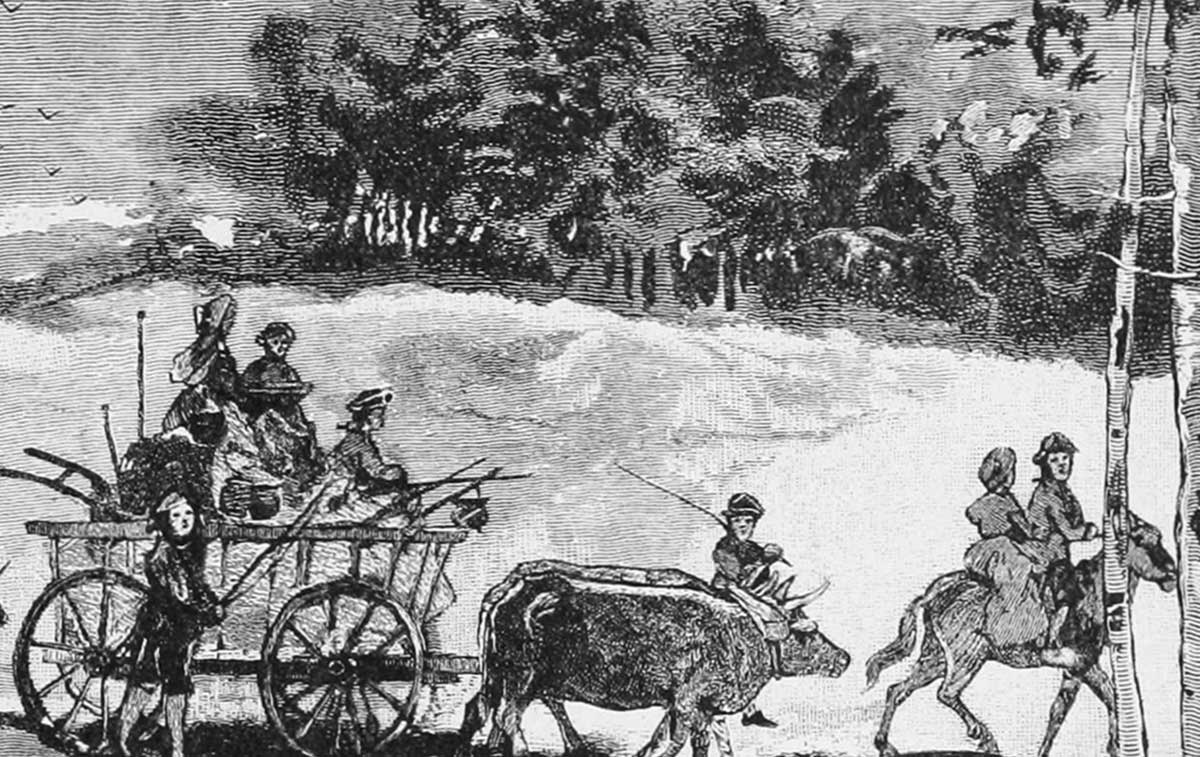
31.5—September/October 2018
Errands into the Moral Wilderness
Forms of Christian Family Witness & Renewal by Allan C. Carlson
calling all readers
Please Donate
"There are magazines worth reading but few worth saving . . . Touchstone is just such a magazine."
—Alice von Hildebrand
"Here we do not concede one square millimeter of territory to falsehood, folly, contemporary sentimentality, or fashion. We speak the truth, and let God be our judge. . . . Touchstone is the one committedly Christian conservative journal."
—Anthony Esolen, Touchstone senior editor






